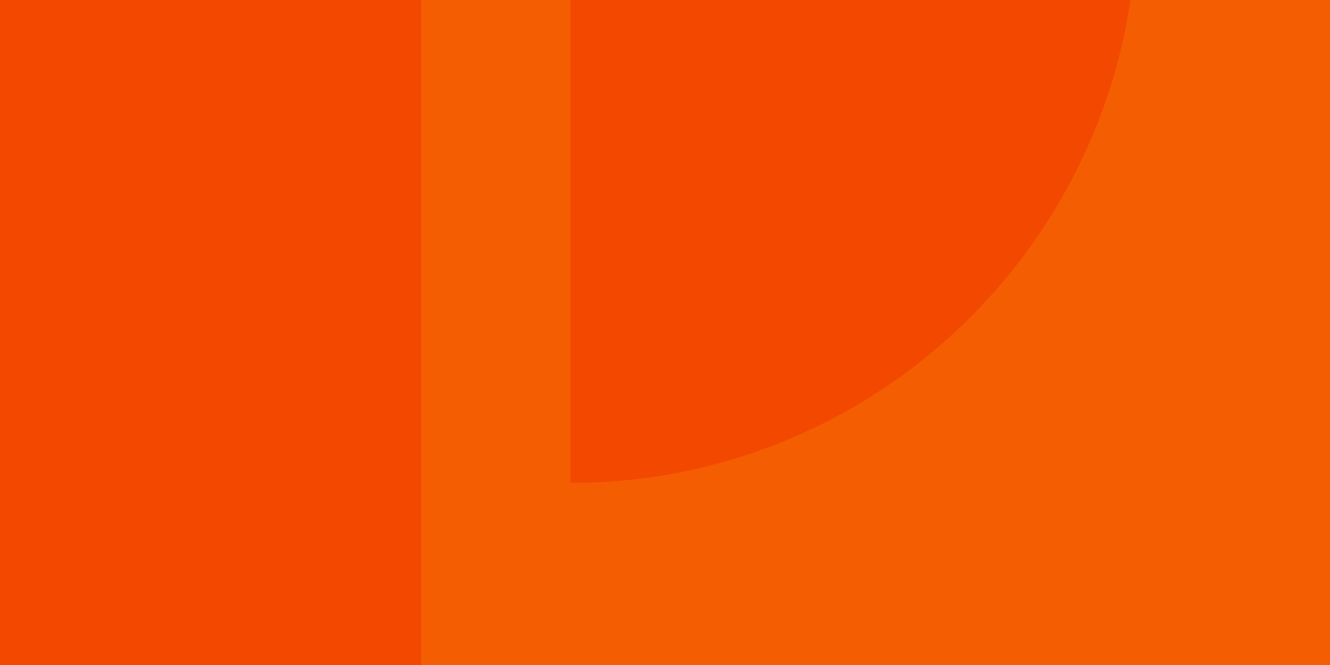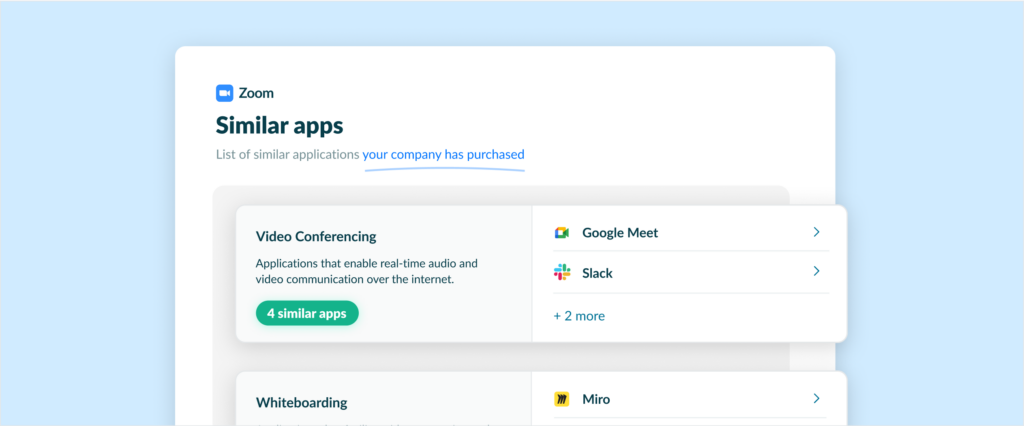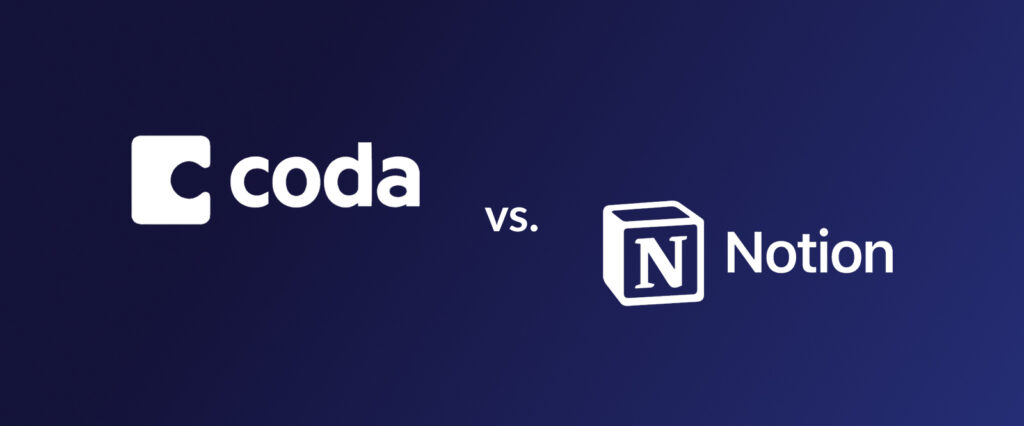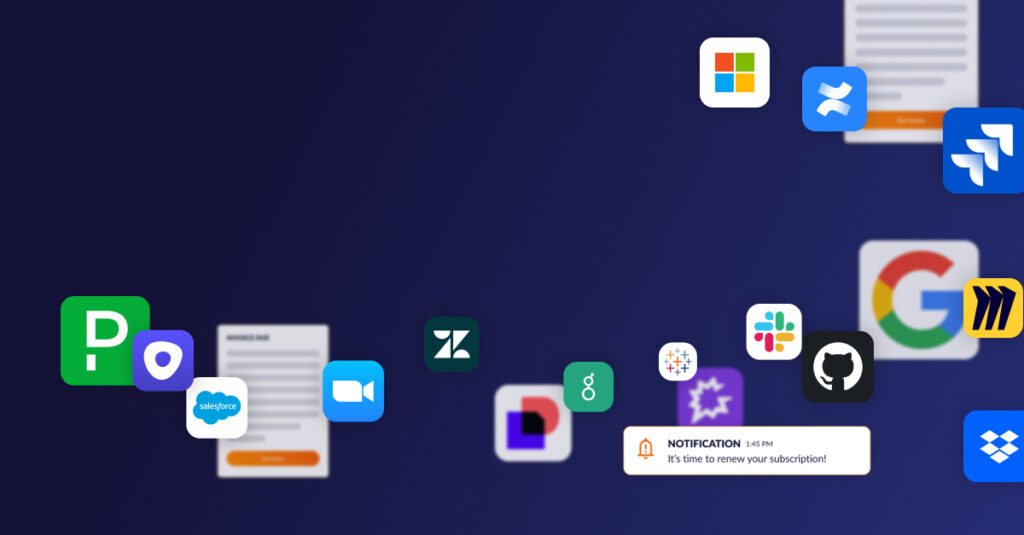
Rounding out the year — The top SaaS apps, according to the data
Whether we’re looking at AI launches, mass staffing changes, tighter budgets, or a new boom of software, it’s safe to say that the tech world has experienced a whirlwind year. But, despite Procurement leaders facing tougher decisions when it comes to budget spend, SaaS (software as a service) sprawl continues at an upward rate. In 2023, the average number of SaaS apps used by each department has increased by 27% to now include 87 apps. Some of those are industry veterans while others are new players in the field. As tech stacks continue to evolve, let’s take a look at how 2023 molded the SaaS space this year:
Top overall performers:
To break down the data, we analyzed overall usage and performance in seven departments: sales, product, operations, marketing, IT & security, engineering, and customer success. Across these groups — and throughout recent years — four apps have continued to come out on top. Aptly named “The Quad,” let’s dive into how these four apps (and one surprise performer) continue to dominate the SaaS app stacks for most teams:
- Salesforce: A continued preference of sales, marketing, operations, and customer success teams, Salesforce maintained its position as the top choice in these categories. The customer relationship management (CRM) platform launched numerous new features and enhancements in the last year — including Einstein search, an AI-powered search tool — to enhance user productivity and stay in-line with current procurement trends.
- LinkedIn: Another external-facing favorite. LinkedIn, while a consistent performer, saw positive usage growth as it claimed the #2 spot for overall usage for sales and operations. Marketing teams, on the other hand, dropped LinkedIn down to #4, with Atlassian Cloud and Figma moving ahead. LinkedIn launched a handful of new AI features, mainly targeted at assisting people teams with recruitment and job postings.
- Atlassian Cloud: Atlassian Cloud continued to dominate the top rankings across all categories, with product teams ranking it the highest. Other Atlassian Cloud products — which, as of April 2023, host an AI feature—including Jira, Confluence, and Trello, also delivered a strong performance and continued to be recognized globally for their ability to streamline processes, increase productivity, and improve collaboration.
- DocuSign: IT & security teams saw the largest percentage growth of SaaS apps at 33%, driven by point solutions as well as apps that help them uncover greater ROI across the business — and DocuSign continues to be one of them. The platform, which gives users the ability to securely sign agreements with other parties, claimed the fifth rank for the IT & security category and overall. Like the other contenders in the space, DocuSign included an AI-enhancement in its 2023 feature launch to streamline ID Verification, with many more features to come in 2024.
- Lucidchart: The web-based diagramming app beat out “The Quad” to top the overall usage chart in 2023. It preserved its lead over Micro, another digital collaboration platform with similar features. With over 34 app updates in 2023, Lucidchart focused on product-led growth and strong execution to drive success. In line with current trends, one new feature was an AI prompt flow. Lucidchart is used by 86% of Productiv customers.
High climbers and new arrivals:
If the top performers taught us anything, it’s that AI and optimization is on the rise. While the five chart-toppers have all integrated a new AI feature, the same can be said for those lower on the list as well. Collaboration and efficiency were also a key theme amongst chart climbers and new arrivals on the top charts. Tools that bring people together, making work more efficient, and collaboration and data accessible, are seeing success gaining adoption and traction within teams.
- ChatGPT: The fastest growing software application in history. It’s no surprise that the AI app scored well with teams during its first year on market. ChatGPT made a strong debut across all teams — marketing, engineering, and product tech stacks ranking it the highest. It even made a surprise appearance on the operations and IT & security charts. As the use-case for AI continues to grow, a lot of marketers are experimenting with the app for generative AI, copywriting, research, and more. And while it has yet to claim a spot within the top 20 overall, expect to see a lot more from ChatGPT — and AI — in coming years.
- Calendly: The collaborative scheduling platform won points with sales teams and is beginning to solidify its position as a core tool. It climbed the highest in the ranks between 2022 and 2023, possibly driven by the rise in hybrid work. Now, it’s claimed the 11th spot overall.
- Confluence: It’s all about teamwork. The team workspace moved up in the rankings, making significant jumps of seven, eight, and nine ranks for operations, IT & security, and engineering, respectively. It landed itself in the top 10 across all teams and appeared on the overall chart in the final ranked spot.
- Canva: The graphic design tool carved out a spot as a new marketing staple. It debuted on the marketing top 20 list in 2022 and gained traction to rise into the top 10 this year. It’s segmented its place as a core marketing tool for creating and collaborating on banners, posters, email templates, and other DIY graphics. Canva also launched an AI feature in 2023 called Magic Studio that’s available to pro members.
- Datadog: The cloud monitoring and analytics platform provides solutions for application analytics and enables organizations to make data driven decisions. As cloud and app monitoring becomes more mainstream, Datadog saw a rise within product teams, climbing from 19th to 11th over the last year.
- Loom: The tool of choice in marketing for video recording. Debuting at 18th in 2023 for marketing and 19th for product, Loom is segmenting itself as a go-to SaaS tool in its breakout year.
- Notion: As the theme of collaboration continues to rise for these emerging solutions, Notion is no exception as a tool for teams looking for customizable and connected workspace solutions. Its flexible toolset for note-taking, data management, and project management helped it crack the top 20 for product and engineering teams.
What apps saw a decline in use in 2023?
While it was a winning year for some, others struggled to retain their rankings. Many Procurement teams have placed a focus on consolidation and app management within the current climate.
- Asana: The work-management app saw an average of a six-rank descent across all categories. While it previously held a steady position among product teams, Asana failed to rank within sales, engineering, and operations, despite a strong debut in the State of SaaS in 2021. Facing strong competition and a consolidation of project management tools, Asana dropped from the 13th spot to 19th overall, with competitor Jira Software claiming 7th.
- Zendesk: The customer service software and sales CRM has seen a decline in rankings, year-over-year. The largest drop comes from the customer success team, with usage dropping it from the 5th spot down to 19th. Although usage declined for Zendesk, customer success teams still saw the second highest percent growth of tool proliferation, at a 30% increase YoY, as the importance of customer retention magnified between 2022 and 2023.
Procurement leaders should expect to see more cases like Asana and Zendesk as we move further into the era of consolidation. But despite this expectation, tool proliferation was at an all time high in 2023. Engineering continued to be the department with the most apps, adopting more data science tools and developer productivity and collaboration SaaS apps, increasing the overall number from 87 to 108.
As we move into 2024, Procurement professionals will have to find balance between consolidation and proliferation by using the proper analytics to make data driven decisions. Whether you’re buying into AI, shifting your business strategies, or adjusting to the current market, understanding which tools your teams use can significantly impact which you choose to buy, renew, and retire in the new year.
Hear from our own and other Procurement leaders on what they’re predicting for 2024 →
The above data has been pulled from Productiv’s 2023 State of SaaS report. Taking a holistic look at this year, we compiled this report based on analysis of anonymized data from businesses using Productiv. We analyzed over 100 billion app usage data points across over 3 years to develop a comprehensive understanding of the state of SaaS in 2023. Discover the complete report here.
Note: The top 20 SaaS app analysis is based on the number of Productiv customers using the SaaS apps. It includes data across all customer segments. This analysis excluded birthright SaaS apps: Google Suite, Microsoft Suite, Zoom, Slack, Productiv, Envoy, AWS, GCP, Azure
About Productiv:
Productiv is the IT operating system to manage your entire SaaS ecosystem. It centralizes visibility into your tech stack, so CIOs and IT leaders can confidently set strategy, optimize renewals, and empower employees.
Learn more today




